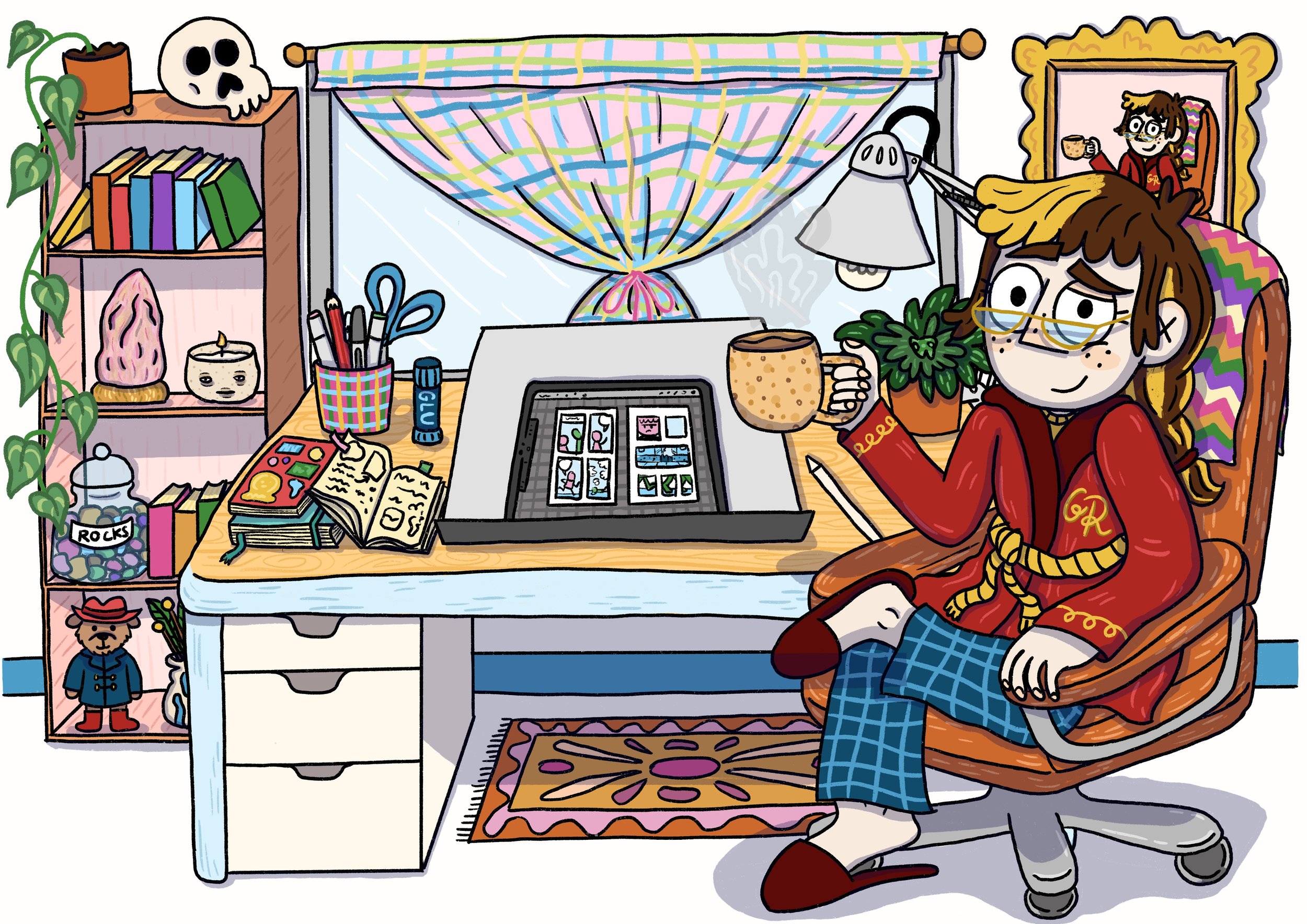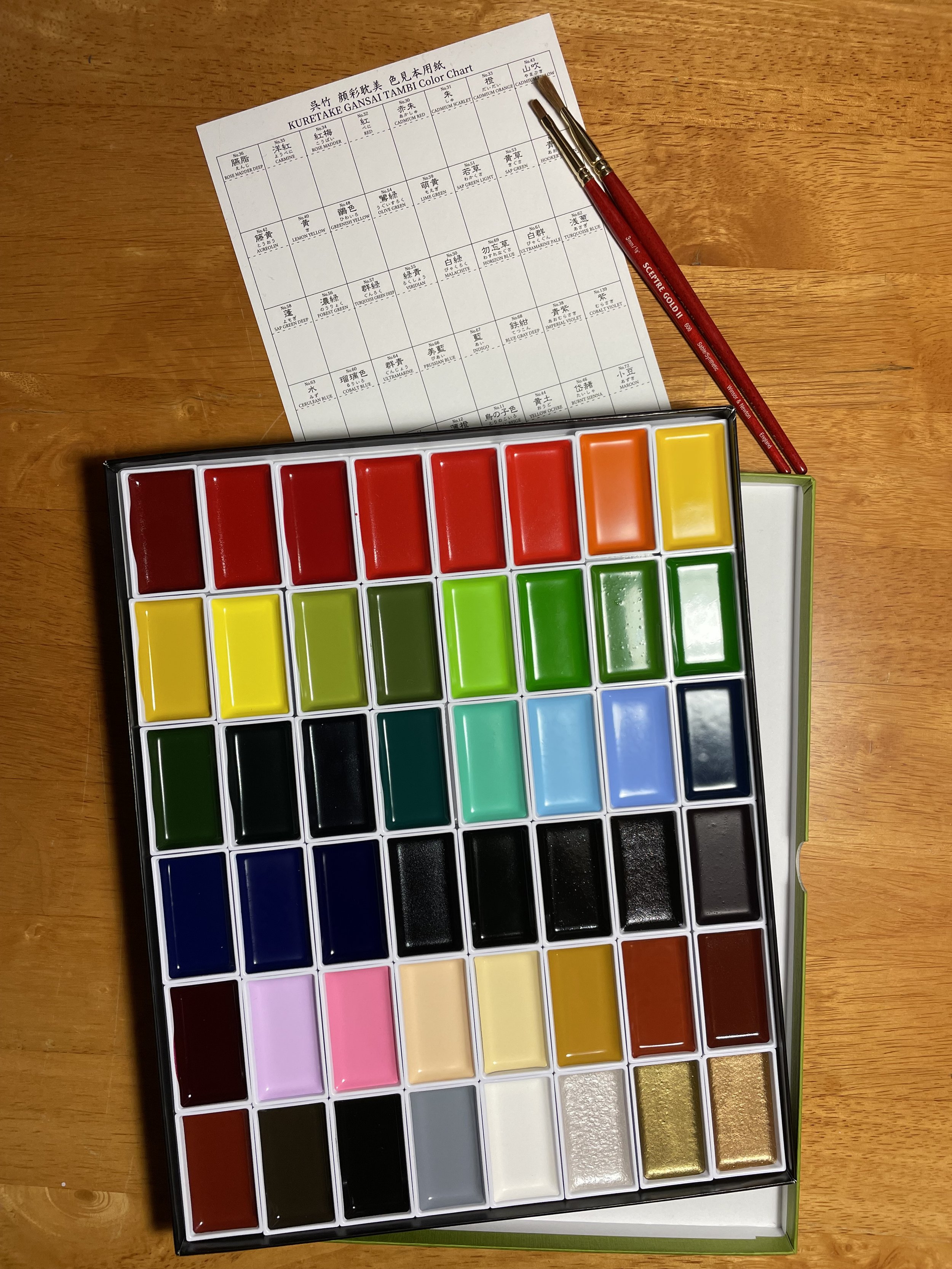Above: Roof Rat by George Rex based on Jake Holmes’s Roof Rat.
Above left: Roof Rat by Jake Holmes. Based on the Highway Rat by Julia Donaldson, illustrated by Axel Scheffler.
Above right: The Highway Rat by Axel Scheffler.
This year my screenprinter & illustrator pal Jake Holmes (jaketoothandnail on instagram) and I have decided to be drawing buddies. Each month we will take turns to decide on a drawing challenge that we will both undertake over the course of the month. Jake already has his own goal of drawing for at least 30 minutes every day, which he’s been doing for the past couple of years, and I’m trying to do that too this year (that’s 30 minutes of ‘free’ drawing, on top of my Oh Brother work!). The monthly drawing challenges we come up with are more to help us have a guideline of something to draw, if we’re ever stuck for ideas. I’m hoping to use these drawing prompts to challenge my skills, particularly in areas that I’m weakest (perspective, adding backgrounds, light and shadow, pushing poses to be even more animated).
Above left: Jaunty Space Man by George Rex based on Jake Holmes’s illustration “Homecoming”.
Above right: Jake Holmes’s original illustration “Homecoming”.
The January challenge was set by Jake. It was simple: we scroll through each other’s instagram account, pick some characters that the other had already drawn & posted, and then redraw the characters in our own style. My aim was to do one a week throughout January. I tried to pick a range of different characters and then push their poses and add backgrounds (if they didn’t have them already).
Above left: Tina Papanikolas by George Rex, watercolour illustration.
Above right: Tina Papanikolas by Jake Holmes, based on watercolour illustration by George Rex.
Jake ended up drawing a version of one my favourite characters I’ve created in the past few years, Tina Papanikolas, who (along with her new best friend Tori) solves mysteries and crimes happening in their neighbourhood. I love Jake’s version of Tina, particularly how he captures her cool mesh skirt (I get to live out all my fashion dreams through Tina). My version of Tina that Jake based his off is one of the few watercolour illustrations I did last year, when I was trying to get a handle on different mediums.
I really like how Jake uses light and shade to bring his characters to life, and redrawing his characters this month has really pushed me to think about how I use light (or don’t) in my illustration and comics.
Above left: The Gang by George Rex based on Jake Holmes’s cool teens illustration.
Above right: Jake Holmes’s original illustration of three cool teens.
These Jake characters were the most like ones I would normally draw and I had a lot of fun trying to show their personalities through their poses. When I showed Jake my version, he said that he’d been inspired by how I draw characters when creating the original drawings. I thought that was pretty neat.
I had a ton of fun redrawing Jake’s characters and it was a great way to get into the habit of drawing every day, because I knew when I sat down to draw that I didn’t have to think about what to draw, I just had to have a quick scroll through Jake’s instagram and get inspired. So far this year I’ve managed to draw every day for at least half an hour and it feels really good!
Above left: Cheese Wizard by George Rex based on Jake Holmes’s Cheese Wizard illustration.
Above right: Cheese Wizard by Jake Holmes. Jake originally drew this character based on a prompt by me!
It’s been really interesting drawing so much that I notice little habits of mine, like how I generally love my pencil sketch but then hate the inked version (and the flat colours even more). But when I start adding in shading (and highlights) or textures, it all starts coming together. When it’s just inks and flats, it looks okay but it’s kinda like looking at a haircut halfway through, it’s almost there but it hasn’t got that pizzazz of a final drawing.
It’s my choice for our February drawing challenge but I haven’t decided what it will be yet. But I’m looking forward to it and seeing what we both come up with (it’s always more fun to do a drawing challenge with a buddy, it definitely helps to keep me more motivated).











































